Editor’s note: This is the first in a series of school profiles we’ll be sharing on Motionographer. The following profile was compiled in August, 2015.
Since its founding in 1978, The Savannah College of Art and Design has solidified its place as a leading institution for the study of motion design.
As one of the few US universities that offers both undergraduate and graduate programs dedicated to the study of motion design, SCAD attracts students with diverse professional and cultural backgrounds from around the world.
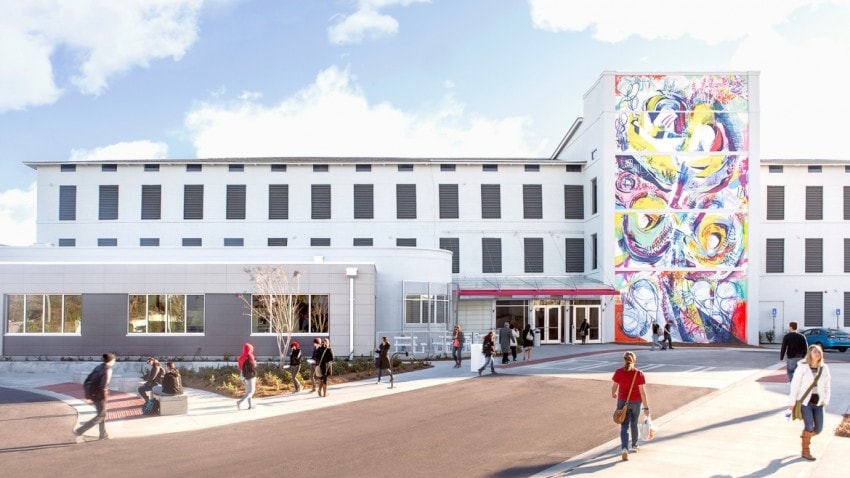
SCAD’s Montgomery Hall houses Motion Media Design, Animation, Visual Effects and Interactive Design & Game Development classes.
At a Glance
| Location | Savannah, Georgia (USA) |
| School Population | 12,000 students from over 100 countries |
| Motion Media Design Program Population | Around 250, including MOME minors |
| Chair | John Colette |
| Programs of Study | BFA (undergraduate) MA and MFA (graduate) |
| Average Undergraduate Tuition & Fees | Tuition $34,470 Housing $8,889 Full Meal Plan $1,710 per quarter |
Q&A with John Colette, Chair of the Motion Media Design Department
Can you explain SCAD’s approach to motion design education?
This is a big question. SCAD is focused on preparing students for professional careers. The graduate with a career (as opposed to a job) is someone who is a creative problem solver and can take that problem solving ability into the field and continue to grow with that capacity over time. So I would say we try to develop strong designers, with a historical and critical understanding, who can adapt their design thinking, professionally, into different contexts over time.
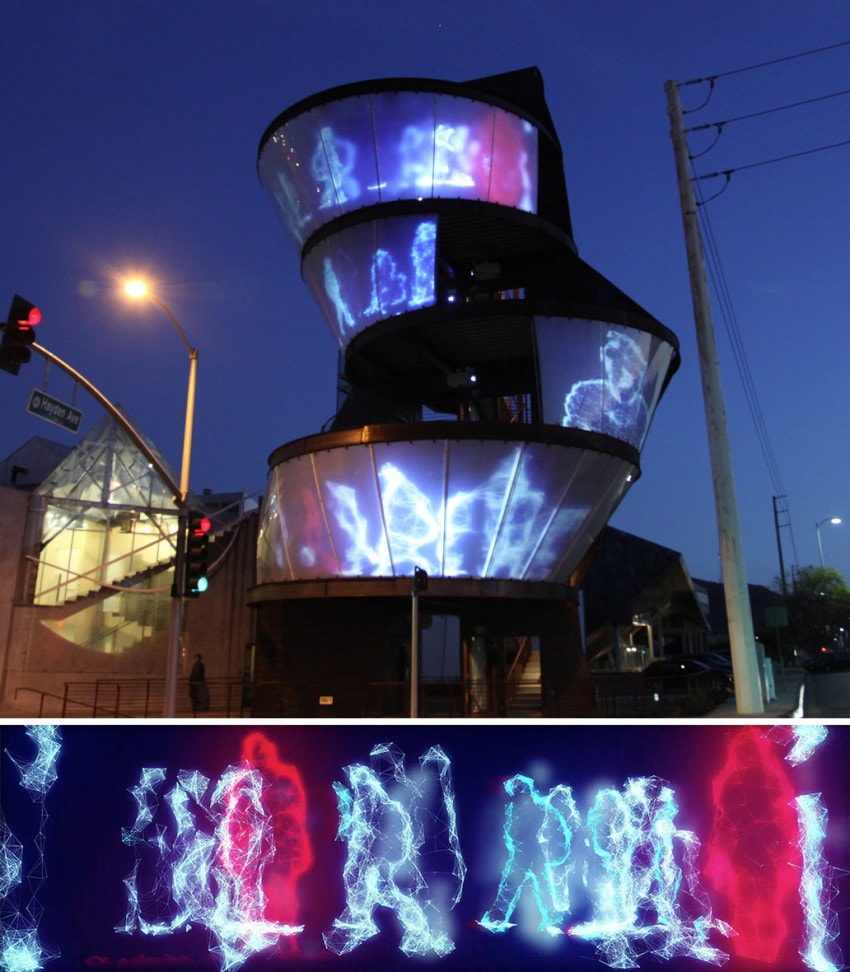
Mark McCallum work “Flux” for group show on Samitaur Tower, Culver City. Generated using depth / point cloud capture on the Kinect and rendered in After Effects. Displayed on 10linked HD rear projection surfaces.
If you look at the way the professional world is moving – there are entirely new fields of activity that motion designers are involved in – public space works, installations, UX and UI design. Working across these areas is a thinking process more than a “skills” process, so you need to develop the thinking and problem solving that puts specific skills into an applied context.
Design sits on top of practice or craft, which in itself sits above specific skills. Being good at some process or software is a skill. Like you’re good at Cinema 4D – that’s a skill. Integrating multiple skills into productive activity is a craft.
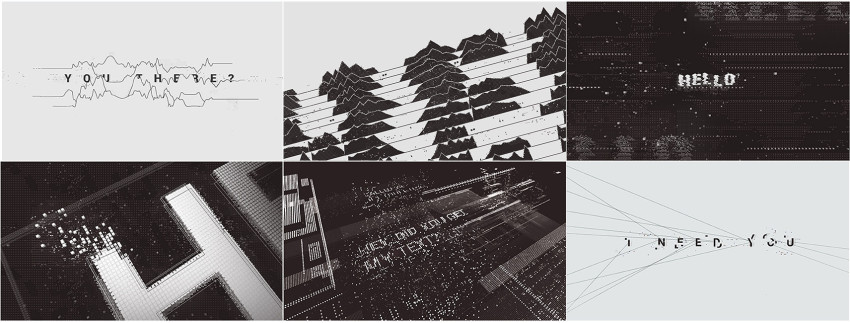
Styleframes developed using Processing to render text treatments on the theme of Love.
For MOME 220: Design for Motion
I might be a furniture maker. Producing fine dovetail joints is a skill. Using multiple techniques to create fine Shaker furniture is a craft – but it falls short of actual design. When I can solve specific problems in new ways, through making furniture – that’s design. It produces new and considered approaches to our interactions with the world.
Let’s quickly make the first distinction between art and design. Art is exploratory in that it poses questions and ideally provokes the audience aesthetically.
Design on the other hand is very much about the improvement of a process – designing the new outcome through evaluation and discrimination. Industrial design, graphic design, service design – they all take an object, message or process and look to improve it through applied thinking and practice. Motion design is similar, in that is embraces the full possibility of the moving image and looks to solve problems through new and applied solutions.
“Donning the Digital Mask: Anonymous,” senior project by Chris Finn (BFA, 2015)
Design is, by its very nature, a focused activity with regards to a specific outcome – you’d simply call that outcome a “brief” in any commercial setting. The implicit focus of the work into a specific application is why the practice of thinking in a rigorous and discriminating manner is important, because design is in many ways more about what you remove from the work than what is left at the end of the process.
In our work, motion design, it is also important to be able to technically deliver the work, and to have a solid creative practice that is, in some manner, unique and helps to inspire your thinking and practice.
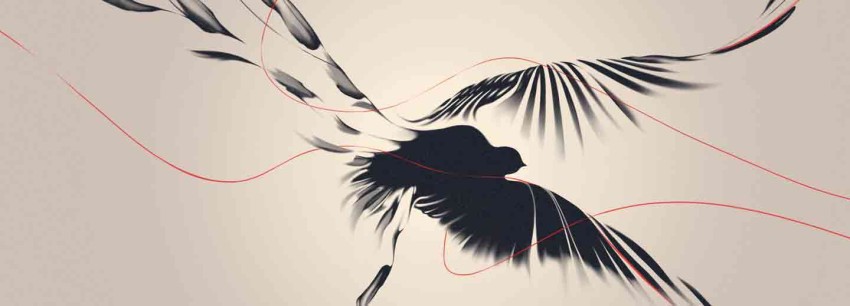
Styleframe from MOME 220 Design for Motion 2015 by Trish Janovic
So art inspires design, it stimulates it, but they are different, although sometimes complementary, processes.
In this way – art, design, technology and theory all combine. A student needs to have time to experiment and be openly creative in the artistic sense, and they need to know the historical background of the field they are involved in.
They also need to work. The greatest factor in success is persistence. Working on your practice again and again is important no matter what you want to improve on – so repeated and sustained work (and critique) is vital in developing good design practice.
Taking these creative and critical perspectives, and sustaining a deliberate practice of professional development – ideally with a community of like-minded people and strong mentors — builds a solid foundation for your work. So we try to create an environment where each student can develop to the peak of their potential – with as much support as it is possible to provide.
Why would a student choose SCAD over another institution?
The real secret is the incredible community at SCAD. It is, quite literally, a life changing experience for the students.
I think we tend to attract students who are very committed to their own success, who see the process of study as important and want to wring every opportunity out of that time that they spend in school. The school’s values are absolutely focused on students as the first priority, and so that translates into great support for their study and professional development.
- Project using laser cut paper craft. Melissa Arbelaez, MA Final Project 2015
We also have a lot of students that visit the campus before they come – and once they see what is going on here, the decision is usually pretty easy. The facilities are state of the art, but importantly, also the access to faculty. You may want to catch up with a professor – and they are always here for the students outside of class.
Schools that operate with a large adjunct faculty are one approach, but after class everyone just leaves and goes back to work. So if you want extra help or to discuss a problem, it’s not that easy. We don’t have classes on Fridays, but the building is full of faculty doing extra help sessions with their students, doing extra projects and basically living the process. That availability of faculty translates into a very strong individual focus on students – and their projects.
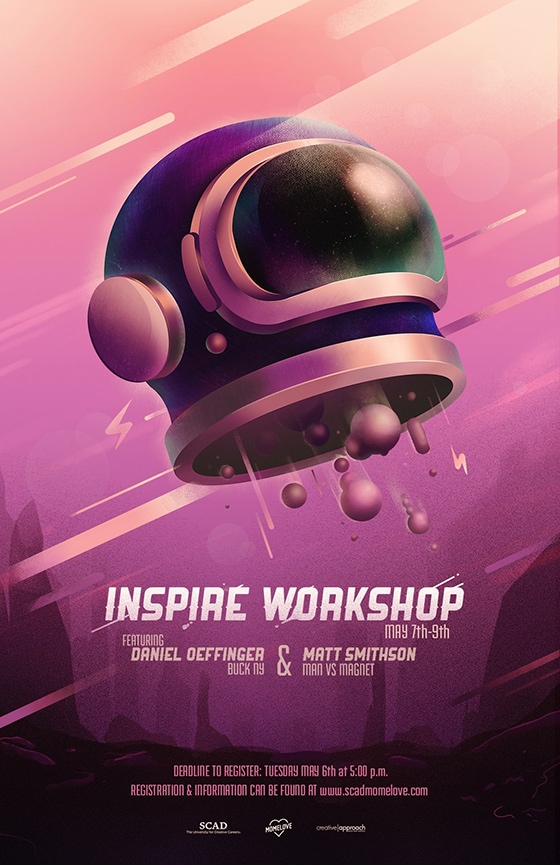
Collaborative workshop to develop ideas for a “Spotify” campaign in a small group environment.
Because we are so focused on community, students develop incredible relationships, and the Alumni network is so strong, and that makes a big difference for people professionally after they leave.
The school’s reputation in the industry speaks for itself, and this also brings in a lot of visiting professionals who spend time with the students, run workshops with them and mentor them professionally.
Collaborating with industry
We also offer collaborative course projects with industry – which are quite unique in my experience in academia. We have 40 programs at the University, and in these collaborative projects, students across different disciplines come together with industry leaders and professors to work on specific, real world design projects.

Collaborative department project, 2015
Our department is very involved in these, with companies such as Microsoft, Adobe, BMW, Gulfstream, Fox Broadcasting, Disney – the list is almost a who’s who of the media and design business world. It’s a really great opportunity to understand different approaches and ways of thinking that closely mirrors working in a high level collaborative design environment as a professional.
Probably the last thing is the implicit flexibility of the program. I want to be able to say “yes” to the widest application of ideas and process across all areas of Motion Design. We have students working in everything from User Experience design to outdoor projection and public space works to Virtual Reality.
There is really no “house style” that we promote. I expect students to be independently creative and to be great problem solvers, because this is what creates the difference between a “job” and a career.
What kinds of students do best at SCAD?
Inquisitive, sociable, hard working people, who want to push themselves creatively. That’s probably the same in any institution, but I feel we can facilitate both highly complex production problems, and strong intellectual and creative problems.
As the head of the motion design department, what do you look for in faculty?
Firstly: a great attitude with a passion for student success. You need to be inspired by your students and to want to see them surpass your own capacities. Teaching involves an essential generosity of spirit.
I also like to think that everyone is different, in approach, personality and experience. The unique contribution of each faculty member is important to seeing the full potential of the department. Everyone needs to be inspired to bring the best of themselves to the classroom with that spirit of generosity.
What’s an area that you’re currently working to improve at SCAD?
Most of the small things we look at every quarter: how we work with invited guests for workshops we run, how to bring new electives into the program and how to make sure we develop the right changes to keep up with changes in the professional practice requirements of the media industries.
We are also shifting our portfolio process for undergraduates into a professional practice course that merges elements of the graduate business course we run. So not just having a showreel and an identity, but understanding freelance systems, studio roles, project commissioning and team responsibilities, project milestones and communicating these to a client — and practical things like choosing a legal entity to run a business through.
Having that information, and a good grounding in how to understand your place in the production process for different types of work is important in placing creative work into a professional context.
Where do you see the future of motion design headed and how is SCAD preparing students for that trajectory?
The future is really about design – creative problem solving. We build that into everything we teach.
This problem solving will happen across so many areas: public spaces, virtual spaces and also all of the traditional places that the motion “industry” has found an application. We really concentrate on the design thinking in the process – how to develop and pitch great work, how to produce a great solution to a motion problem and also how to think in new moving image spaces, from a stadium to a smartphone.

SCAD works for the Digital Graffiti exhibition at Alys Beach, Florida, June 2015. Projection Mapping
We are working a lot with large scale and projected imagery, projection mapping and architectural installations. At the same time, the increasing interest in interactivity and responsive media is something we are very involved in. There are courses in interactive motion and an entire series of courses in physical computing and installation work.
I think we evolve our facilities, programs and practice very, very quickly – without the naïve technological infatuation that has accompanied so much discussion of media technologies in the past (CD ROM, anyone?).
With all of the focus on novelty, there are so many skills that compound into new work. Cinematography, compositing, alternative processes, physical modeling and design and a fundamental visual and narrative grammar that are fundamental to approaching new opportunities with confidence and a string capacity for creative discrimination. We never let these elements or the work disappear from the program.
This process is very interactive. It involves industry, students and academics in a circle of influence that has deep roots but a high antenna.
Student Perspectives
Taylor English (BFA 2015)
The Motion Media Design department at SCAD is a diverse and passionate collection of professors and peers. Students receive a strong foundation in design and animation, but they are pushed to pursue their individual interests, which leads to a body of students with a diverse range of skills.
The family-like atmosphere encourages students to share their knowledge with each other and grow together through collaborative projects in classes and workshops hosted by the department and student club MOME Love. These relationships continue into the industry as SCAD alumni are constantly in each other’s professional network.
Mark McCallum (BFA 2015)
What I love about the MOME department is the dynamic support and culture. As soon as my feet touched the ground in Montgomery Hall, the teachers where there to open my eyes to the various avenues of exploration. They supported me to take the first steps, when I realized I was passionate about unorthodox routes of creative experimentation and technological tinkering.
Along the way, I met and collaborated with some amazing friends for life and gratefully gained industry knowledge and experience, thanks to the opportunities provided by the amazing people of MOME Love.
Daniel Uribe (BFA 2015)
The motion media department at SCAD is more like a big, creative family. I love the fact that everybody is always helping each other to learn new techniques and are always happy to collaborate with each other. The professors are 100% involved with the students and provide professional insights from the industry.
The department at SCAD is passionate about new technologies and styles, and that is something students value a lot. The professors are always looking at contemporary trends and new techniques to help students to expand their knowledge.
As a student, the most valuable thing about the program is being able to have professors and peers that help me develop my inner voice in whatever direction I want. The possibilities in an environment like this are limitless.







